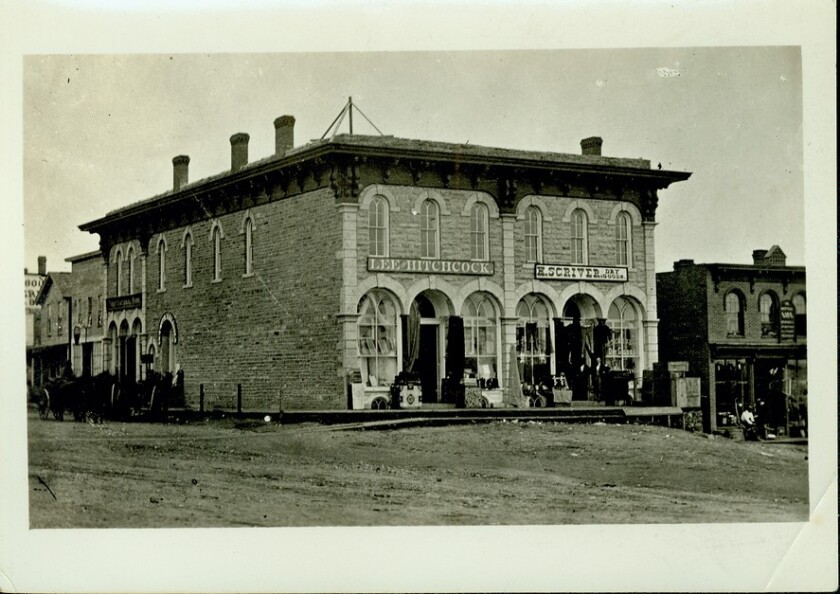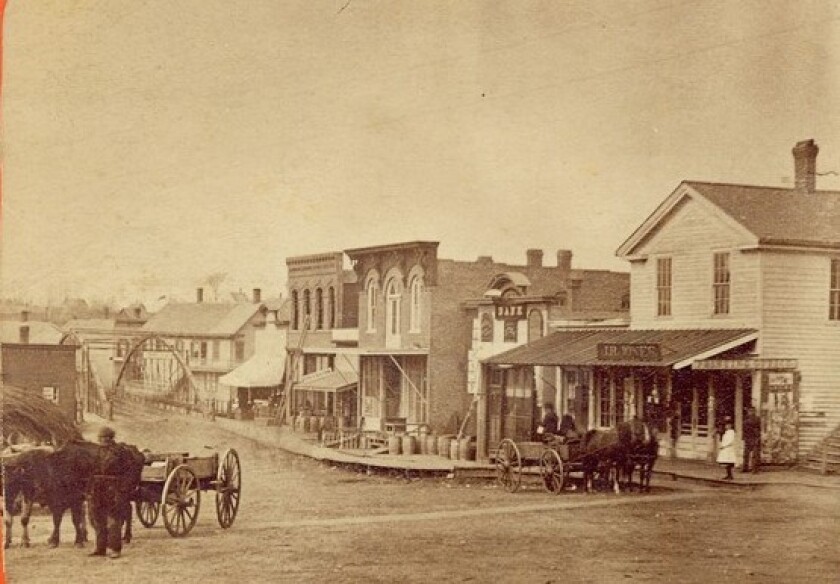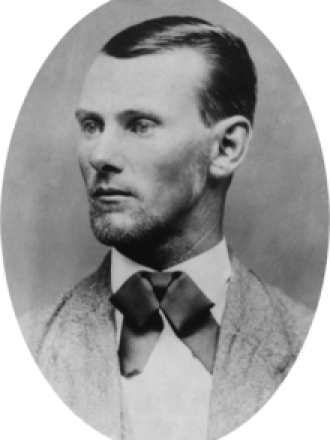Editor's note: This archival Vault article was first published July 5, 2022.
NORTHFIELD, Minn. – Seven minutes is all it took to make history in Northfield.
ADVERTISEMENT
The James-Younger gang — led by the infamous outlaw Jesse James — rode into Northfield, Minn., on Sept. 7, 1876, intent on robbing the First National Bank in heart of town. The gang was notorious throughout the country for its train and bank robberies and was planning to make its mark in Minnesota with a string of robberies.
But seven minutes after attempting to add another heist to their list, the gang was defeated in a shootout with the people of Northfield. The short skirmish effectively ended the gang as it left three members dead and three eventually to be captured but killed two Northfield citizens.
The attempted robbery was forever cemented in Northfield’s history and is still celebrated by the community on the robbery attempt’s anniversary.
“Northfield is the only place that can claim the defeat of the James-Younger gang,” said Cathy Osterman, the executive director of the Northfield Historical Society. “There is no place else on the earth that has the same story … This is the only place that the townspeople bested this gang, or for lack of a better term, terrorists.

“It wasn’t the police, it wasn’t an authority, but it was people defending each other on behalf of each other.”
The First National Bank wasn’t the gang’s first choice to rob in Minnesota that week, according to the .
Three days prior, the gang attempted to rob the First National Bank in Mankato, Minn., but decided to abort the robbery and ride to Northfield.
ADVERTISEMENT
The eight bandits — consisting of James, his brother Frank, Bob, Jim and Cole Younger, Clell Miller, Charlie Pitts and Bill Stiles — arrived in Northfield at 2 p.m. Three members, Frank, Pitts and Bob, entered the bank and approached cashier Joseph Heywood, demanding he open the safe, .
Heywood told the robbers he couldn’t because the safe was on a time lock.
At the same time, J.S. Allen, a hardware merchant that managed to leave the bank, alerted the town of the robbery.
“Get your guns, boys!” Allen yelled. “They’re robbing the bank!"

One robber inside the bank attempted to enter the vault, Heywood tried closing the vault door on him, but another robber grabbed him and threw him aside. The robber inside the vault grabbed Heywood and once again demanded he open the safe. He then took out his knife and ran it across Heywood’s neck, but the wound wasn’t life-threatening.
Outside the bank, a shootout on Division Street was underway between the remaining gang members and Northfield citizens. The first casualty of the gunfight was Swedish immigrant Nicholas Gustafson, who was wounded in the head and died days later.
Two citizens, Henry Wheeler and Anselm Manning, were able to gun down gang members Clell Miller and Bill Stiles in the street as the remaining members fled the town. Before leaving the bank, Frank James turned toward Heywood and shot him in the head.
ADVERTISEMENT

The Younger brothers were all captured weeks later and plead guilty to Heywood’s murder. Charlie Pitts was killed in a shootout when authorities attempted to arrest him two weeks later, and the James brothers fled to Missouri having had split off days prior from the group.
Osterman believes if the robbery was successful that day, Northfield’s future would’ve been significantly altered.
“It’s not like they knew who was robbing them, they just knew the money was in danger,” She said. “Their hopes and dreams, and businesses and community were in danger if the money was stolen. So many things hinged on that money in the bank. There were two very new colleges, the mill here in town since it was a milling town. So, there was money invested in that bank and a lot of people had their hopes and dreams in it.”
It’s because of this that the Northfield community celebrates the day every year on the weekend after Labor Day.

Osterman said roughly over 80,000 people come to Northfield for , which include re-enactments of the bank raid, a carnival, a car show, horse races, tractor pulls and a memorial service at Heywood’s grave.
“It’s just part of the identity and the fabric of the community,” Osterman said. “Everyone’s embraced the fact that it was built on community… It’s the fact that this particular bank robbery and the repelling of these robbers is the only place (this occurred) and I think that’s kind of worthy of celebration and worthy of helping people understand that it isn’t ‘rah rah' for the bad guys, and I think that gets lost a lot. It’s kind of ‘rah rah’ for the community. It’s we’re gonna stand up for each other and do the best by each other and not let anyone else come in and destroy that.”
If those seven minutes back in 1876 had gone any differently, then the history of Northfield, the community, and the way its celebrated would all be different, which is why Osterman said she is most thankful for that day.
ADVERTISEMENT
“That’s the biggest homage to the 1876 robberies, that if it had gone a different way, Northfield would be dramatically different now and we wouldn’t have the history that we have," she said. "We have all kinds of different varied stories that we can tell because Northfield did continue to thrive after this event happened.”













